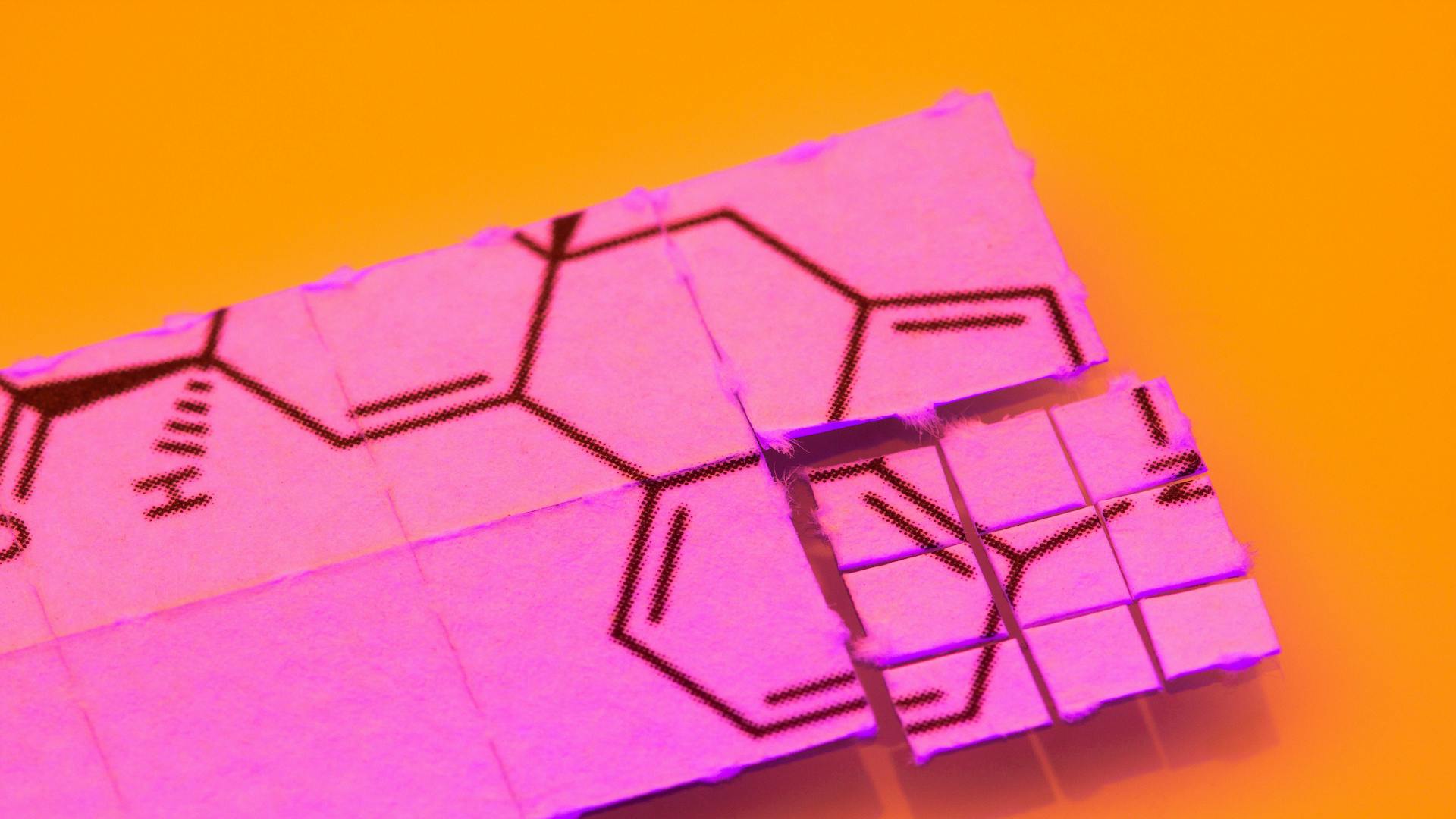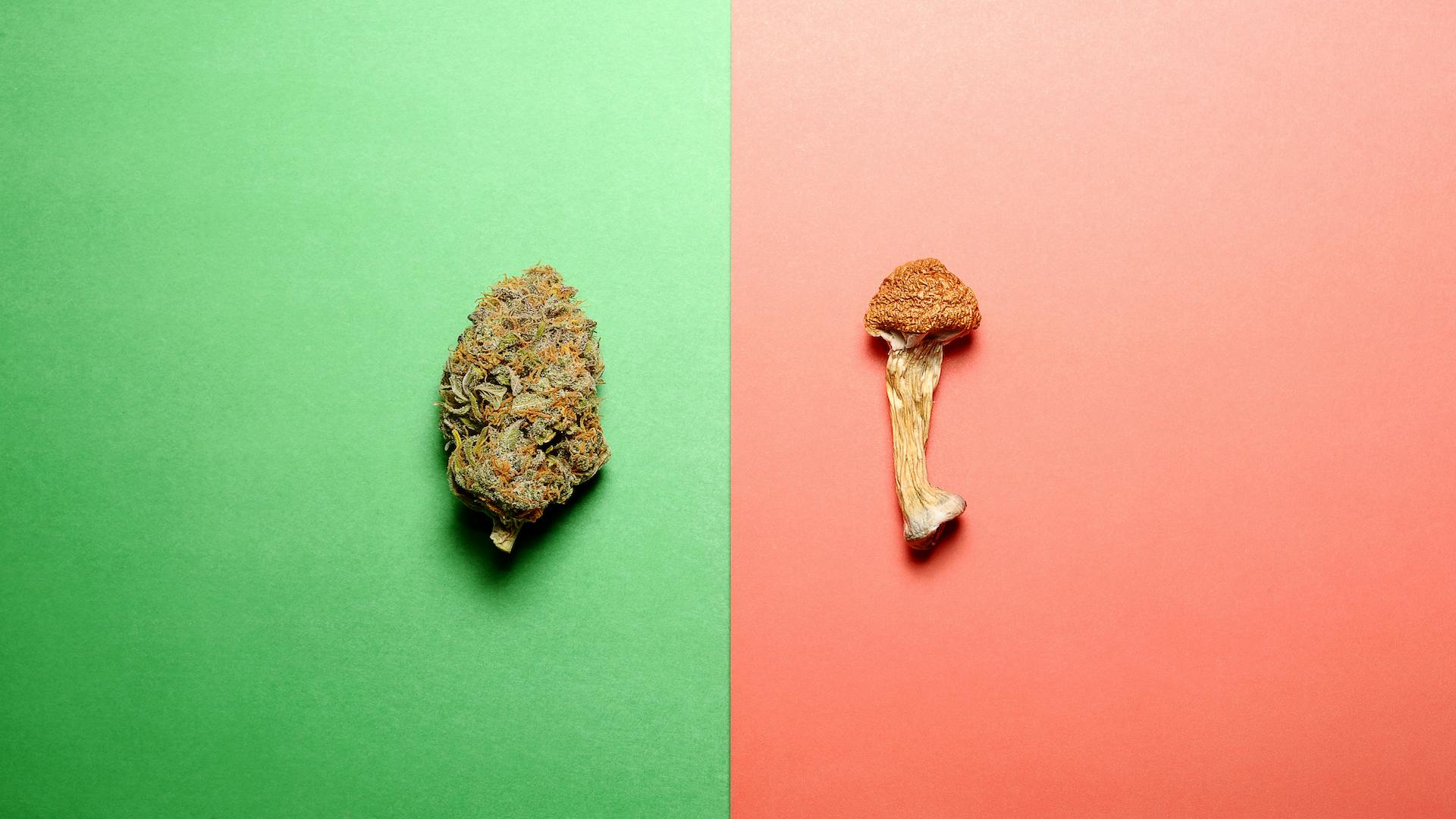Written by Emma Stone

For six years, a patient, who we’ll call “Dan,” suffered from the darkness of depression. College became impossible, and he cycled in and out of the hospital following suicide attempts. A dozen different medications, as well as transcranial magnetic stimulation, yielded no change.
One day he chanced upon information about ketamine injections for depression. After five sessions, he felt alert. He experienced emotions he hadn’t felt for years, and colors seemed more vivid. He credits ketamine treatment with helping to save his life, and similar stories abound, with users on Reddit forums trading stories and tips about their experiences with ketamine therapy.
Ketamine is a unique psychedelic compound that is as much at home in a therapy session as at a rave or in a veterinary clinic. A multitasking drug, ketamine often flies under the radar compared to high-profile psychedelics like psilocybin or LSD.
Ketamine is also distinct from other psychedelics in another critical way—it’s already legally used in clinics across the US and Canada to treat certain mental illnesses. So what’s the deal with ketamine?
What is ketamine?
Ketamine was first synthesized1 in a laboratory in 1962 for use as a general anesthetic. The chemists who developed it found that the drug could rapidly and profoundly relieve pain with minimal side effects; plus, it offered an altered state of consciousness to boot.
The World Health Organization (WHO) places ketamine2 in its List of Essential Medicines. The drug is also used in veterinary settings, particularly as a horse tranquilizer. In clubbing circles, ketamine is affectionately known as “Special K” or “Vitamin K,” where it’s prized for its quick-acting, hallucinogenic trips.
In 1970, the FDA approved ketamine as an anesthetic for diagnostic and surgical procedures that don’t require muscle relaxation. With FDA approval comes the privilege of “off-label use”—when the FDA approves a drug, healthcare providers may prescribe the drug for a different use than originally intended, if they judge it to be medically appropriate for a patient.
The off-label use of drugs isn’t particularly novel: Antidepressant Wellbutrin, for example, is used as an off-label treatment for children diagnosed with ADHD.
Ketamine is now administered off-label to treat mood and pain disorders—particularly major depressive disorder, post-traumatic stress disorder, and chronic pain. There are now hundreds of clinics3 throughout the US offering ketamine treatments, and more are popping up around the globe.
However, the drug does have some risks despite FDA approval. The DEA categorized ketamine as a schedule III controlled substance in 1999, which means it has an accepted medical use, but also the potential for abuse.
While there is still much to unravel about how ketamine works, there’s no question that the momentum in support of the compound is picking up pace. High-profile adherents of the psychedelic, such as former NBA player Lamar Odom, are speaking publicly about their experiences following ketamine therapy. Odom has recently released a film, Lamar Odom Reborn, detailing how ketamine therapy and other psychedelics helped him break patterns of addiction.
What are the effects of ketamine?
Ketamine consumers report a range of sensations4 after taking the drug, many of which are typical of other psychedelic compounds. Hallucinations, altered sensory perception and sense of time, near-death experiences, and enhanced sexual, musical, and sensory enjoyment are all commonly experienced, with the intensity of the experience linked to dosage.
Less pleasant ketamine trips are sometimes described as a “K-hole” and can be accompanied by panic, anxiety, paranoia, and confusion.
Ketamine has been touted as a paradigm shift in the treatment for depression, and some researchers contend that it may serve as a prototype for a totally new class of antidepressant medications.
Similar to other psychedelics, a ketamine trip can also induce novel ways of thinking and perceiving, which is why the compound can be so transformative for those with mood disorders.
Individuals who have tried ketamine also report dissociation, which can be experienced as a euphoric sense of floating or being detached from the body, or a “zooming in and out,” difficulty speaking, and waves of nausea.
A trip typically lasts from 20-60 minutes, with a low dose packing a robust psychedelic punch. In other words, a little goes a long way.
How does ketamine interact with the brain?
Like many psychedelics, scientists still have much to learn about how ketamine acts on the brain, but what is clear is that ketamine affects the brain’s glutaminergic system. When something triggers us5 to feel fear, or we avoid difficult memories or emotions, that’s the glutaminergic system at work.
“Ketamine modulates a neurotransmitter called glutamate, which has been implicated in a number of mental health conditions, such as mood and anxiety disorders,” said Dr. Reid Robison, a board-certified psychiatrist and Chief Medical Officer of Novamind, a network of psychiatry clinics specializing in psychedelic medicine.
Ketamine doesn’t work like traditional antidepressants. SSRIs—selective serotonin reuptake inhibitors—work by elevating levels of neurotransmitters, such as the brain chemical serotonin, which affect people’s moods. But ketamine appears to make it easier for depressed brains to get “unstuck” from deeply imprinted and detrimental patterns of thinking and feeling.
The psychedelic has been touted as a paradigm shift in the treatment for depression, and some researchers contend that it may serve as a prototype for a totally new class of antidepressant medications6.
What are the therapeutic benefits of ketamine?
Ketamine infusion therapy first began in clinics7 about twenty years ago. It can help treat mood disorders and appears to deliver extremely rapid antidepressant effects6, far more efficiently than conventional antidepressant medicines such as SSRIs, which are typically prescribed to treat depression.
“Ketamine is now emerging as a powerful catalyst to accelerate the healing and recovery process in individuals suffering from a wide array of mental health symptoms,” explained Robison. “What opened the door to ketamine use in psychiatry was a series of studies that found it to be a powerful antidepressant that works quickly. Now we use it for depression, PTSD, obsessive-compulsive disorder and a number of other conditions, especially when traditional approaches haven’t helped.”
When used with psychotherapy, ketamine therapy can support the patient to identify where they are “stuck.” According to Robison, a ketamine therapy session can help peel away layers of narratives and behavioral patterns, allowing an individual to identify and address the root of a problem, instead of simply treating the symptoms.
“Past experiences, especially traumatic ones, can shape our perception of ourselves and the world, including how to manage our emotions and how we react to life’s challenges,” said Robison. “These perceptions can become habitual patterns that contribute to our suffering and are often extremely difficult to change.”
In a 2019 study8, 12 out of 14 patients experienced a reduction in suicidal ideation following ketamine treatment, with some reporting results kicking in after just a few hours. The patients also reported that they experienced improved mood, reduced anxiety, and enhanced clarity of thought, concentration, and focus.
SSRIs, in comparison, take four to eight weeks to work—too long for those who are dangerously depressed or suicidal. What’s more, they tend to only relieve depression in 25-35% of patients who take them, and often come with a host of unwanted side effects9, including issues with sleep and sexual function, withdrawal symptoms such as anxiety, and “brain zaps”—sensations that feel like an electric shock in the head.
Ketamine may also help individuals with anorexia or bulimia. “In our study with people with eating disorders, we found that ketamine-assisted psychotherapy helped people to feel less anxious and less depressed, but also helped them with disordered thoughts and behaviors related to eating,” said Robison.
For those who find conventional antidepressants ineffective, ketamine looks like a promising alternative. In 2019, the FDA approved an esketamine nasal spray, a form of ketamine, for treatment-resistant depression to be used in conjunction with an oral antidepressant.
However, there’s also concern that ketamine’s fast-acting magic may come down to it being a novel opioid10. Some scientists suspect that ketamine indirectly activates the body’s opioid receptors—and regular use could encourage abuse and addiction, further fueling the opioid epidemic. Until research fully unravels how ketamine works and how best to use and administer it, many experts are cautious about jumping on board with ketamine therapy.
What happens in a ketamine therapy session?
Many clinics combine intravenous ketamine infusions with psychotherapy, but some do not use therapy.
“When paired with psychotherapy, ketamine has the potential to be a transformational catalyst or ‘reboot’ button that helps people break out of habitual patterns and anxiety loops, and forge a new healthier and happier path forward,” said Robison.
The ketamine-assisted psychotherapy (KAP) administered in Novamind clinics generally consists of three parts: preparatory session, dosing session, and integration session.
Dosing usually lasts 4-6 sessions and begins with intention setting prior to administering ketamine and ends with a brief processing of the experience. A typical dosing session often starts with some breathwork or meditation to help the patient settle into the present moment.
“It’s important to establish the right mindset because psychedelic medicines are non-specific amplifiers of what’s in our subconscious,” said Robison. “If you go in anxious, there’s a risk of this getting amplified. Setting is also another consideration because it can shape the experience, and we just want setting, and any other factors, to get out of the way of the medicine.”
The patient then sets an intention for their journey before the ketamine IV starts flowing. Eyeshades and music are offered to prompt relaxation, and the therapist is on hand to hold space and offer support for the patient if needed.
Robison explained that patients undergo some processing with the therapist directly after the ketamine dosing to help draw wisdom and insight from the experience while it is fresh. “Then we’ll schedule integration sessions, ideally within a few days of dosing, to utilize the window of opportunity—and neuroplasticity—opened up by ketamine.” Neuroplasticity refers to the physiological changes that take place in the brain as a response to interactions with our environment. The connections between our brain cells reorganize, allowing us to learn from different experiences throughout our lives.
Integration sessions help the client to make sense of their experience, and uncover insights and meaning that can be incorporated into their day-to-day life.
At Novamind, ketamine is also used in smaller doses before a normal therapy session, in lozenges or a nasal spray. “This is called ketamine-psycholytic psychotherapy, and it helps to facilitate openness and deep therapeutic work, with the clinician assisting the whole time,” said Robison.
Dosing and integration sessions can be repeated, depending on the individual and their treatment plan and how they respond to the therapy. “The psychotherapeutic effects of ketamine can be immediate or delayed, subtle or pronounced,” said Reid.
Some individuals who have undergone ketamine therapy, like Dan, find that the effects can wane after a month and a half and so schedule in regular “booster” sessions.
References
- Li, L. and Vlisides, PE.”Ketamine: 50 Years of Modulating the Mind.” Front Hum Neurosci. 2016; 10: 612.
- WHO Fact file on ketamine. 2016.
- The American Society of Ketamine Physicians, Psychotherapists, and Practitioners (ASKP3) website.
- Lim, D. “Ketamine associated psychedelic effects and dependence.” Singapore Med J. 2003; Vol 44(1) : 031-034
- Gillespie, CF, Ressler, KJ. “Emotional Learning and Glutamate: Translational Perspectives.” CNS Spectr. 2005 Oct; 10(10): 831–839.
- Krystal, JH. Abdallah, CG, Sanacora, G, Charney, DC, Duman, RS. “Ketamine: A Paradigm Shift for Depression Research and Treatment.”
- Wilkinson, ST, Toprak, M, Turner, M, Levine, S, Katz, R, Sanacora, G. “A survey of the clinical, off-label use of ketamine as a treatment for psychiatric disorders.” Am J Psychiatry. 2017 Jul 1; 174(7): 695–696.
- Lascelles, K, Marzano, L, Brand, F, Trueman, H, McShane, R, Hawton, K. “Effects of ketamine treatment on suicidal ideation: a qualitative study of patients’ accounts following treatment for depression in a UK ketamine clinic.” BMJ Open, Vol. 9, Issue 8.
- Harvard Medical School. “Going off antidepressants.” Harvard Health Publishing.
- George, MS. “Is There Really Nothing New Under the Sun? Is Low-Dose Ketamine a Fast-Acting Antidepressant Simply Because It Is An Opioid?” Am J Psychiatry 2018; 175:1157–1158.
Read more of Leafly’s guide to psychedelics
- Psychedelic medicine: How psychedelics can help
- How do psychedelics work?
- The history of psychedelics
- Which psychedelic drugs are legal?
- Is cannabis a psychedelic?
- How ego death can improve mental health
- Types of psychedelics
- MDMA
- LSD
- Mushrooms
- DMT
- Ketamine
- How to dose psychedelic mushrooms
- Magic mushrooms and acid: What are the differences?
- Smoking weed with psychedelic mushrooms
By providing us with your email address, you agree to Leafly's Terms of Service and Privacy Policy.



